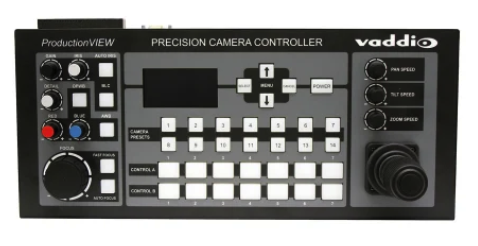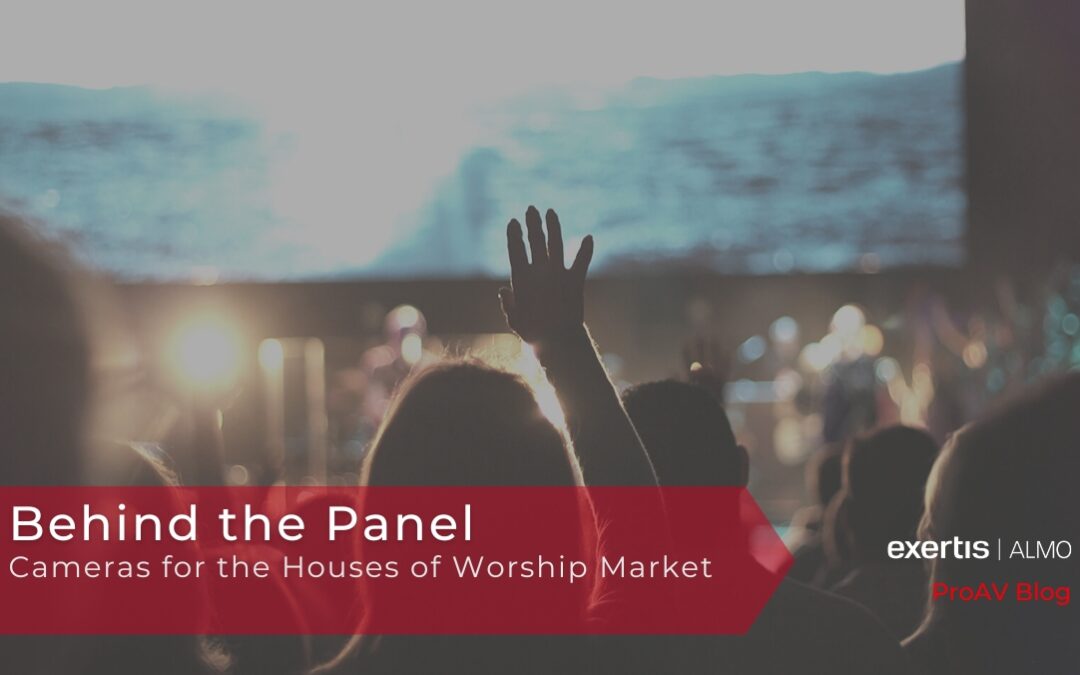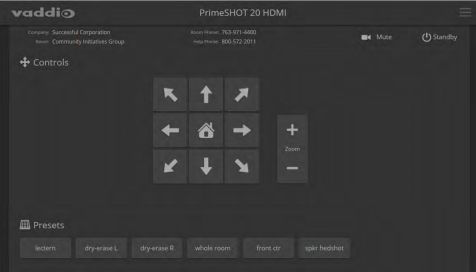Welcome to this installment of “Behind the Panel,” detailing everything you need to know about cameras for the House of Worship (HOW) market. I realize that this doesn’t technically fall “behind,” so, for this edition, open your minds and we will go “beyond” the panel. By now, I am hoping you had a chance to read my colleague, Rob Voorhees’, blog post, titled “Streaming into the Future; How Bandwidth Needs Have Expanded for Houses of Worship,” which focuses on dedicated bandwidth for the HOW market. If you haven’t, go now and I will wait here for you…
All caught up?? Fantastic, we are moving on! As Rob mentions in his post, streaming services online has been done for quite some time, but the COVID-19 pandemic really forced houses of worship to change the way they reached their congregation. Reading some statistics online, prior to the pandemic, about 40% of churches said they neither livestreamed their service nor posted online later. As we moved throughout 2020, more and more churches, about 65%, said they were streaming services, with 27% saying they posted a sermon online later. What does all this mean? To me, it means if your HOW is not streaming today, they should be ready to make that jump, because even though people have been making the transition back to in-person worship, the pandemic has shown value in making these services available online, whether to sick congregation members, or churchgoers all over the world, wherever they may be. Statistics from Lifeway research included here.
How do you get your local house of worship up and streaming? Well, you have a great start with all that extra bandwidth they have now, so let’s look at how to choose the right camera. We will be looking at PTZ (Pan, Tilt, Zoom) Cameras. Pan is the ability of the camera to move left/right of center. Tilt is the camera’s ability to move up and down. Zoom is the camera’s ability to move in and out, whether done digitally or optically with the lens. Keep in mind with digital zoom, you lose quality as you zoom in on the image. There are cameras that can provide 12X, 20X, 30X, or even greater optical zoom.
Here are some questions that need to be answered when specifying a camera.
What type of connection will be used?
There are many different ways, including HDMI, SDI, and USB. There are benefits to each, but one of the biggest differences is how far the signal can travel on each. SDI can send signals up to 1000 ft. without loss. HDMI can travel up to 50 ft. without the use of extenders. USB is limited to just a few feet. So, paying attention to infrastructure and the budget is very important in making these decisions. It is significantly less expensive to run a few hundred feet of coax cable for an SDI solution than adding extenders to an HDMI solution.
Now, these are great for places with a healthy budget, but what happens if you have a church that is still running on an older technology, like S-Video? Check out what our friends at Vaddio have done. The PrimeSHOT 20 was designed with the HOW market in mind. It comes with 20X optical zoom, 1080p @ 60 fps Resolution and an S-Video output. The camera can detect and downscale the image to S-Video, so you can upgrade the camera in a legacy system, and come back and upgrade the cabling at a later point! Check it out here: PrimeSHOT

Where / how far are you placing the camera?
Important to keep this in mind, because the last thing you want to do is choose a zoom level not high enough for the church’s needs. They may want a wide shot to get the whole stage, or focus on the speaker by getting in tight. Check out this Camera Selection Guide from Vaddio to decide what is best for your local HOW. Don’t forget, these cameras all come with compatible wall mounts, so you have that option right out of the box.
How are you controlling the camera?
Although they come with standard with an IR remote, most HOW will want to have a little finer control over their system. All Vaddio cameras can be controlled via a web browser interface, pictured here >

This gives them great results for a lot of basic streaming. If they are looking for a higher “production value” look no further than the Vaddio ProductionVIEW Precision Camera Controller. This gives the user a broadcast-quality joystick to control the PTZ aspects of the camera, as well as the ability to control up to seven PTZ cameras. It’s not for every church, but for those that are serious about streaming their services, it is definitely worth a look.
I think the important thing to keep in mind, like anything else, is listening to what the customer needs. It seems so simple, but digging in to really find those needs out, as well as identifying future what growth they may see in the future, will allow you to craft a solution that can be friendly to the budget, while, at the same time, giving opportunity for repeat business as they look to expand on the initial solution.
I will leave you with this case study from Heritage Lutheran Church just to show the vast potential for streaming in the HOW market.
Thanks for reading.
l look forward to any feedback you might have. Otherwise, see you next time, when I will venture back “Behind the Panel!”
Read my 1st “Behind the Panel!” blog on Commercial vs Consumer Mounts HERE

Patrick Booth | CTS, DSCE
Business Development Manager
Supported Manufacturers: Legrand AV (SW, W, NW) – Chief, C2G, Da-Lite, Luxul, Middle Atlantic, Vaddio, Wiremold










